Contacts Far and Wide
More than 50 years at the NIH, Gary Felsenfeld continues finding answers.

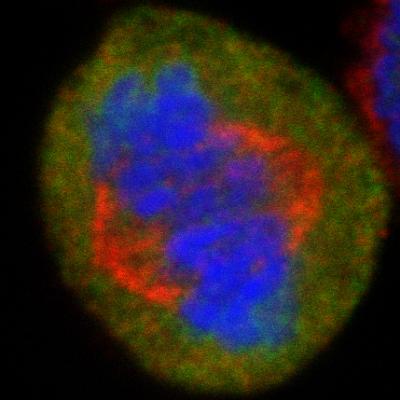
As one of its founding members, Gary Felsenfeld, Ph.D., celebrated the 50th anniversary of the Laboratory of Molecular Biology in the Intramural Research Program (IRP). “The history of his career is the history of the field of transcription science,” said his colleague, David Davies, Ph.D., in an article in the NIH Record in 2005.
Responsible for several fundamental discoveries in a field he helped to create, Felsenfeld could not be blamed if he chose to rest on his laurels. Instead, he is using the wealth of knowledge and tools he has mastered to address the clinically pressing problem of insulin regulation. “It’s the first thing I’ve ever done in over 50 years here that has anything to do with diabetes,” said Felsenfeld, noting that his Laboratory is a part of the National Institute of Diabetes and Digestive and Kidney Diseases.
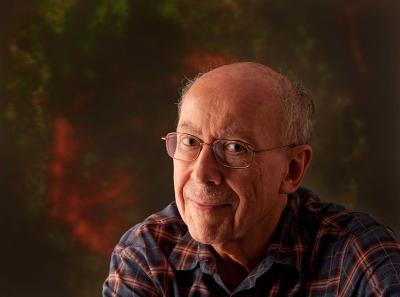
“A lot is known about how insulin expression is controlled by its nearby regulatory elements,” explained Felsenfeld. “Much less is known about the chromatin structure around it. We asked whether there are long-range interactions between insulin genes and other genes that might have regulatory importance.”
Using technologies for capturing long-range interactions in chromatin called circular chromosome conformation capture (or “4C”), Felsenfeld and his colleague Zhixiong Xu, Ph.D., collaborated with the group of Keji Zhao, Ph.D., to show that in human pancreatic islet cells, the promoter region of the insulin gene physically interacts with and regulates transcription of a gene, located over 300 kilobases away. That gene, SYT8, codes for synaptotagmin 8, a protein that Xu, Felsenfeld and colleagues showed helps in the secretion of insulin. This evidence suggests that long-range chromatin interaction might be involved in coupling insulin production with its secretion into the blood stream.
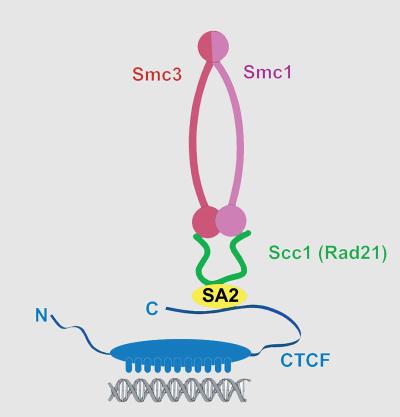
They found that adding glucose to their cells not only stimulated insulin, it also stimulated synaptotagmin 8 and strengthened the physical contact between the two genes. They also showed that shutting down the insulin promoter with a small interfering RNA (siRNA) effectively shut down synaptotagmin 8 expression. Disrupting the production of synaptotagmin 8 reduced insulin secretion, further implicating the functional importance of the transcriptional co-regulation they identified.
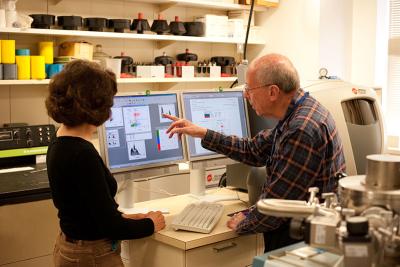
Earlier in his career, Felsenfeld identified a regulatory protein—CTCF—that appeared important for blocking interactions that should not occur between regulatory elements and nearby genes. CTCF has been intensely studied by multiple laboratories over the intervening years. “By the time we started to work on insulin, we knew a lot more about how CTCFs work. We knew that they like to stick to each other, that they tend to come together to stabilize long range loop formation,” explained Felsenfeld. Both the genes for insulin and synaptotagmin 8 have strong CTCF binding sites, which Felsenfeld and his team have shown are critical to their coupled gene regulation. Their work was published in Nature Structural & Molecular Biology earlier this year.
“That is now a general direction for us,” said Felsenfeld. “We are looking at other gene systems and long-range regulatory elements.” He noted that in type-2 diabetes, for example, genome-wide association studies (GWAS) have uncovered several genetic loci that correlate with susceptibility for the disease, but many of these loci appear to be regulatory elements very far from any gene of interest. “We need to know what these contact,” concluded Felsenfeld.
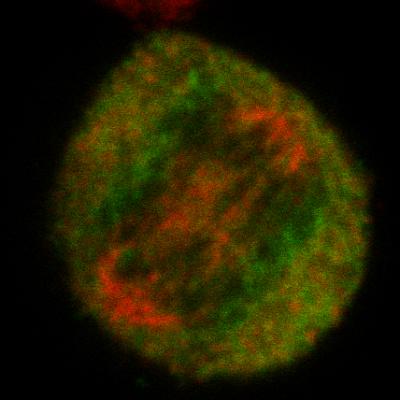
“It’s taken all these years to figure out how our ideas and methods might be clinically useful in a direct way,” said Felsenfeld. “I’m a basic researcher but I’d love to see something useful in terms of diabetes come out of this work.” As part of its 50th anniversary celebrations, the Laboratory of Molecular Biology held a symposium featuring several alumni speakers. Felsenfeld knew they would all feel right at home. “Given how much science has changed in these years, it’s surprising that our laboratory hasn’t changed that much. We still value individuals.” Felsenfeld noted that the Laboratory can count 16 National Academy of Sciences members among past and present ranks. “That’s a record for the NIH,” said Felsenfeld, “and my guess is that number will continue to rise.”
Gary Felsenfeld, Ph.D., is a Distinguished Investigator in the Laboratory of Molecular Biology at the National Institute of Diabetes and Digestive and Kidney Disorders (NIDDK).
Further reading:
This page was last updated on Wednesday, May 24, 2023